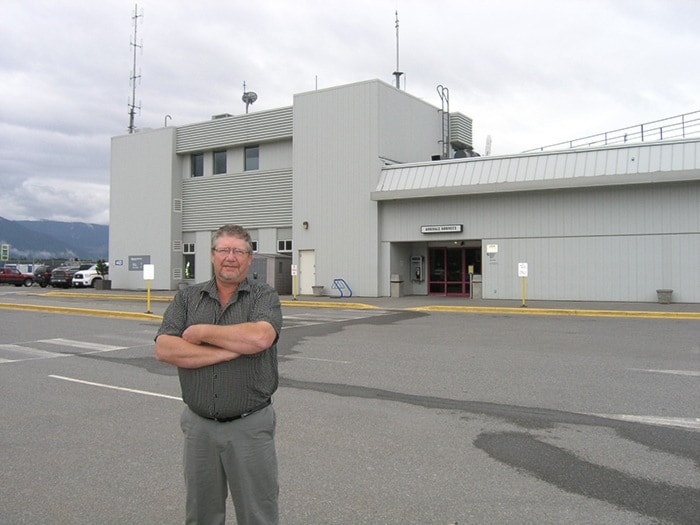It's not even 10 a.m. on a weekday morning and another passenger aircraft pulls up outside the office of Northwest Regional Airport manager Carman Hendry.
A quick glance of a schedule shows it’s the fifth passenger aircraft that morning to either arrive or leave.
And that kind of activity is behind what’s occupying Hendry’s time nowadays – the airport’s passenger numbers are now such it’s obligated by federal regulations to provide an aircraft rescue and firefighting (ARF in the regulatory acronym) service.
Monthly totals have dipped this year compared to last year when preparatory field and other work for liquefied natural gas plants and natural gas pipelines was at its height throughout the region but the airport continues to record very healthy numbers and to keep being the busiest airport in the region.
The in-service date is September based on passengers counts for recent six-month intervals, explains Hendry.
“Once we reach those levels of 180,000 [passengers] for those six month periods, we then have one year to bring in the service,” he said of the September date.
The standard to meet is exact – federal regulations state a rescue/firefighting vehicle has to be at the mid-point of the farthest runway within three minutes of being called out.
While the airport has existing aid agreements with both the City of Terrace and the Thornhill Volunteer Fire departments, there’s no way, other than stationing a vehicle at the airport, they could ever meet that standard.
But Hendry said those agreements will be kept as the airport’s employees will have a very specific role to play if needed.
Their prime function will be to lay down a path of foam from so those on board an aircraft have a safe passage out and to cool down the fuselage of an aircraft.
“They won’t actually be going into the interior of the aircraft,” said Hendry.
The airport has already started training its employees to add firefighting to their job skills.
“With the exception of myself, and the people in the office, everyone’s undergoing training,” said Hendry.
The first phase of training was theory and took place in a classroom in preparation for the hands on component.
Hendry’s prime challenge leading toward the expected September start date for firefighting service is having the kind of sophisticated one-operator firetruck it needs here on time.
Although one arm of Transport Canada requires the service, another arm, the one that would provide the airport with the approximately $1 million needed to buy a truck, has yet to sign off on the money.
“We can’t just go out and order one. That’s not allowed. We have to wait for approval,” said Hendry.
Even with approval, the task of soliciting bids and then choosing a winning bid and then waiting for delivery could take up to a year.
It’s a quandry Hendry says might be solved by either applying for an extension of the firefighting in-service date or by renting a vehicle.
Along with a vehicle, a shelter will be needed and again, it’s a matter of again waiting for Transport Canada to supply the money for construction.
The current plan is to attach a bay equipped with high speed overhead doors for the new truck to the airport’s existing services building where its other equipment is stored.
“It means we’ll only need three walls, not four,” Hendry said of the construction details.
While the airport works its way through the paperwork of acquiring a firetruck, shelter and training, it now faces a second challenge.
The addition of direct flights to and from Calgary this spring have put the airport into a higher regulatory category of landings and takeoffs so that a second firetruck will now be needed.
That’s because a single firetruck can’t carry the amount of foam and water required to meet the higher standard based on the number of aircraft movements.
It means a renewed round of applications to Transport Canada for money, more bids for a firetruck and the construction of a second bay addition to its services building.
“We’ll be following the same path we are now,” said Hendry.
Despite the complexity, the result will be a firefighting service aimed at the safety of the airport’s passenger, he said.
“It’s a natural evolution of our business and it’s exciting,” Hendry added.
There are also other advantages to be had by being the only northwest airport to have on-site firefighting capability.
“We often get requests from companies to provide the service,” said Hendry.
“So in that respect, it opens up a whole new world for marketing.”
